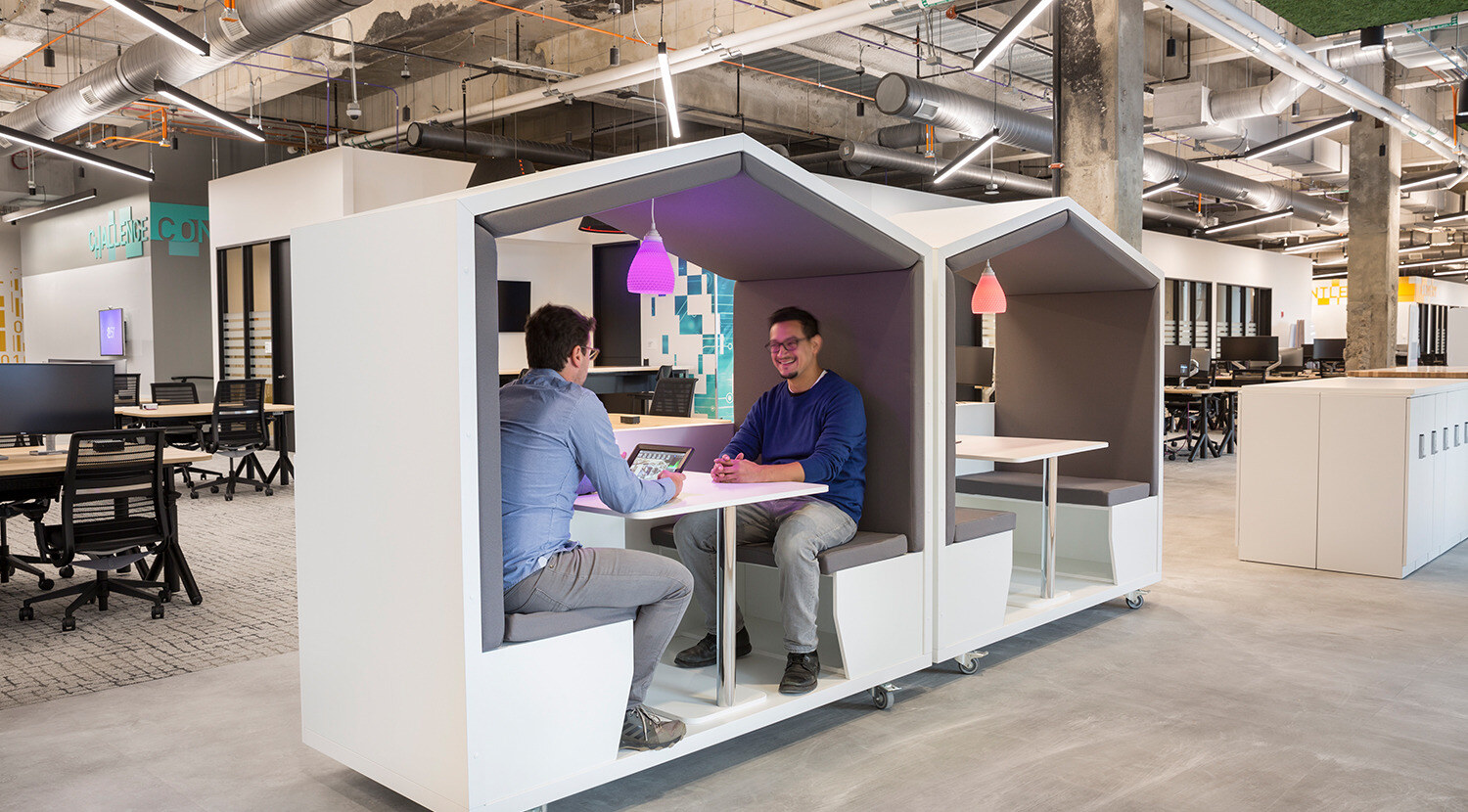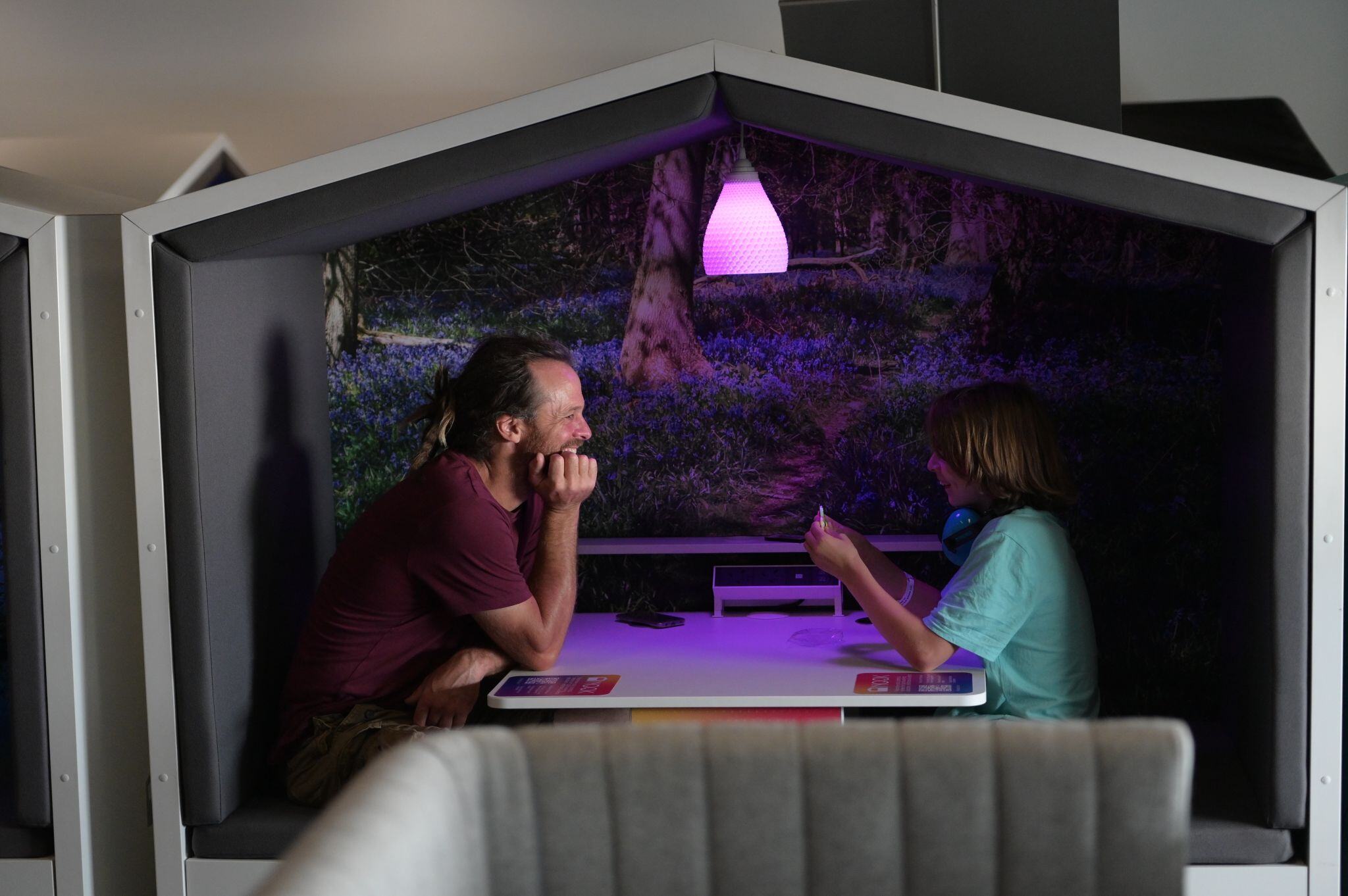Hybrid Working the “new normal”?
Hybrid working is the latest buzz-phrase to enter our post-pandemic language. It describes the blended balance between a workforce that operates from both the home and the office, with employees given more freedom – and trust – to work how and where they want. But what are some of the practicalities around such a set-up?

Accelerated by Covid – but here to stay
The adoption of hybrid working has undoubtedly been accelerated by necessity in terms of social distancing and guidance around reduced occupancy in buildings. But in truth, the tide was turning before the disruption of Covid. Hybrid working adapts to the daily patterns of individuals rather than asking employees to adhere to outdated fixed-hours, fixed-location practices. And it’s a model that’s here to stay.
Technology and Nook makes it happen
Clearly, technology plays a major role in enabling employees to work apart and yet remain connected. Leaders are learning to manage differently – they are less concerned with presenteeism and more focused on outcomes. Technology is enabling this mindset, and Nooks are centre stage.
Teams might be working disparately but tech can put them in the same room at the same time. We’ve seen the role that video calls have played throughout lockdown. These will remain, and participants require spaces in the office where calls can be received from colleagues at home without interruption and without disturbing others. By integrating video cameras into Nooks – or even when simply using laptop webcams – professionals are able to communicate freely within a soundproofed and semi-private space.
Mapping office usage
Other tech plays are proving essential too. The hybrid working model will be new to many businesses, and leaders will want to know that their office set-up is striking the right balance and driving engagement and productivity. To this end, some businesses are investing in occupancy sensors within Nooks and throughout office spaces to provide data on which areas of the office are busiest, which underused, and when. This data can then be used to shape spaces and to inform decision-making around occupancy levels during the week.
Wellbeing to the fore
Returning to the office will undoubtedly be a cause of anxiety for many professionals, and leading businesses are taking care to create environments that offer reassurance – not just in terms of infection control but also in terms of long-term mental health and wellbeing. For example, we’ve introduced air-circulation systems within Nooks which keep air refreshed and occupants protected. And, of course, Nooks are designed with wellbeing and neuroinclusivity in mind. The very presence of Nooks within an office introduces havens of calm and quiet – withdrawal spaces that are equally suited to deep work or to kicking back and taking the pressure out of the day.
We are all having to navigate different ways of working. Commentators suggest that the role of office space is already changing, becoming more focused on enabling collaboration and creativity. Decision-makers are thinking more carefully about providing spaces that are empathetic and inclusive. And all of this is happening in a way which enables disparate teams to stay connected and engaged.
If you’re making the switch to a hybrid working model, we’d love to demonstrate how Nooks can help you achieve your aims. We’re here to make work work better.




.png)
.png)
